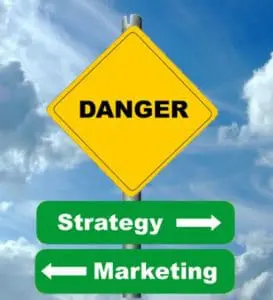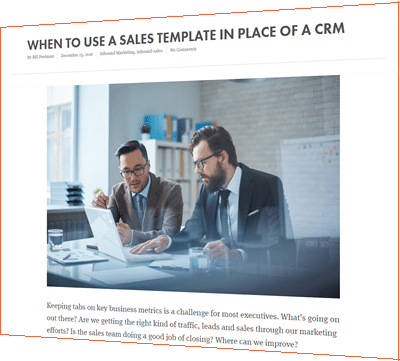 A website redesign project plan is an important step to your overall online rebranding strategy. In fact, I would argue it’s the most crucial piece of effective internet marketing. Why? There are many other important aspects: pay-per-click, advertising, social media, etc. But how much of that do you control? How much is your own online property? The answer is none. Your website is the only property you truly control online. Therefore, you should want to make your website as epic as possible and design your entire online marketing strategy around sending people to your website.
A website redesign project plan is an important step to your overall online rebranding strategy. In fact, I would argue it’s the most crucial piece of effective internet marketing. Why? There are many other important aspects: pay-per-click, advertising, social media, etc. But how much of that do you control? How much is your own online property? The answer is none. Your website is the only property you truly control online. Therefore, you should want to make your website as epic as possible and design your entire online marketing strategy around sending people to your website.
To achieve a website of legendary proportions, you need to have an effective homepage. That’s where many people will first see your website and you want to entice them to stay there once they get there. If it’s poorly constructed or looks like a high schooler made it in Dreamweaver, your homepage will, sadly, be the place where you lose a lot of potential customers. Creating a great homepage will set the precedence for a great overall website, will give some basic information about your organization, product, or service, and will intuitively lead your visitors to where you want them to go.
1. Define Goals
Defining your goals is the most crucial step of the entire process. Each page will have different goals that may not pertain to the overall goal of the website. The homepage goals might be to briefly explain what the website is about and where you want the visitor to click next. If you have any calls-to-action on your homepage, you’ll need a goal for them, too, and it should be a number (e.g. 50% click-through rate on your banner call-to-action).
2. Content
What is your business’ most relevant and descriptive long-tail keyword? Use this keyword and write your business’ value proposition. Your value proposition will be the basis with which you write your homepage content.
You need to have some content on your homepage, but not too much. Everything you write should be optimized for and related to your keyword and value proposition. A good way to add more information without much text is to use headlines, links and bullet points. Whitespace around the text and consistency with the rest of the website are also very important factors to consider.
It should be easy to see everything on the homepage without scrolling down. A way to get the most use of the space above the fold is to use columns (but not too many). The content of the homepage should include links and navigation that sends people to specific pages that they would be interested in and are relevant for.
3. Optimize
Take the long-tail keyword you chose in Step 2 and add it to the page title, meta description, headlines, content, images, and links. Don’t optimize your homepage for more than one keyword. If you have space in the title, you can add your business name (e.g. Inbound Marketing Agency | Sigma Web).
4. Header
The header is one of the first things a visitor will see on your homepage. An optimized header includes your logo, phone number, and courtesy links. Other things that you might add to your header are a call-to-action, an email address, accreditations, etc. The header should be consistent across your entire website.
5. Menu
The menu of your homepage should be large enough to see clearly, be easy to read, and should look the same throughout the website. When designing your menu, step back five feet from your monitor to see if you can still read it. Your menu is there to organize all of your content and products and it should help people find what they’re looking for. Make sure you use descriptive, yet short, menu headings. Don’t have more than eight menu headings or it will be overwhelming and not clear where someone should go to find something.
6. Calls to Action
Calls-to-action are the most critical thing to have on your homepage. You have less than five seconds to get the attention of people visiting your homepage. Ask employees at your company to look at your homepage for five seconds. Then ask them to tell you what they remember about the homepage. You want to see how much people remember. Your calls-to-action should be varied depending on your audience(s), but they should definitely be noticed in the first five seconds. This testing technique is called a “blink test.”
Not all calls-to-action lead to landing pages. You can send a visitor to another web page for education, but that page should have a call-to-action as well.
7. Social Media
These days, every website needs to have at least some social media icons. There’s no excuse not to. “Follow me” icons should be placed near the top or in the header. Social sharing icons can also be used in various other places of your home page and other web pages.
8. Footer
Not many people that come to your homepage will see your footer. The hope is that the visitors take some action before they scroll down to see your footer. Still, you need to have one and it should include your legal company name, copyright year, address, email and phone number. You can also include links that might be the same as your calls to action or links that will take people to the right pages on your site.
9. Test
Subject your coworkers to another blink test. You want to see how much people remember so you can adjust how much content or how many calls to action need to be on your homepage. You can do the
same test with leads and customers, and ask them if they feel like they found what they were looking for. You should test call to action placement, type and anything that relates to your homepage page goals.
If you are redesigning more than just your homepage, many of these steps can be duplicated across your entire website redesign project plan. It’ll take some good planning, work, and testing, but the results and ROI will make it all worth it in the end.





